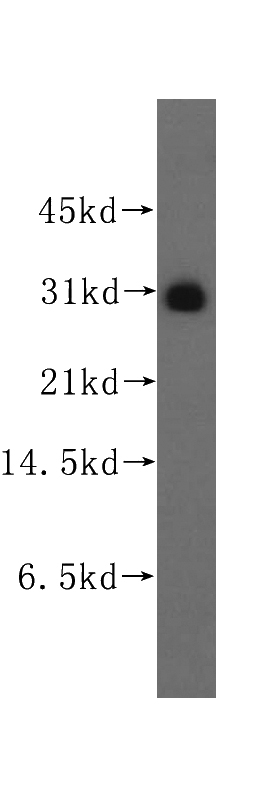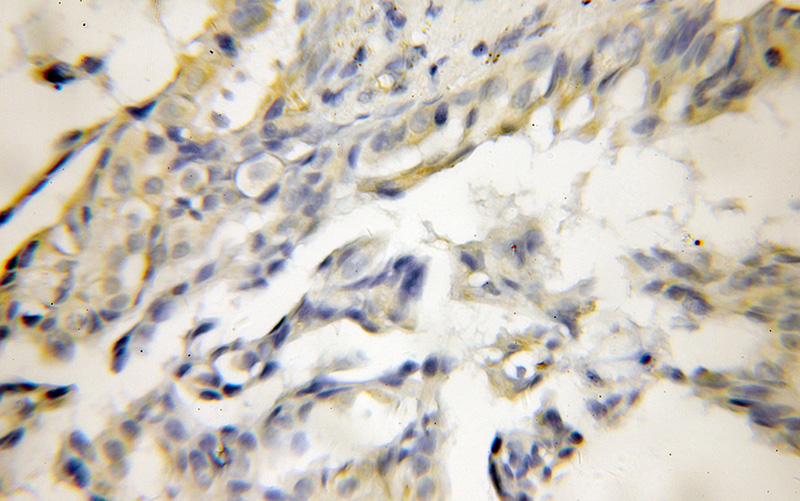-
Product Name
FKBP7 antibody
- Documents
-
Description
FKBP7 Rabbit Polyclonal antibody. Positive IHC detected in human lung cancer tissue. Positive WB detected in human lung tissue, human heart tissue. Observed molecular weight by Western-blot: 30 kDa
-
Tested applications
ELISA, WB, IHC
-
Species reactivity
Human,Mouse,Rat; other species not tested.
-
Alternative names
23 kDa FK506 binding protein antibody; 23 kDa FKBP antibody; FK506 binding protein 7 antibody; FKBP 23 antibody; FKBP 7 antibody; FKBP23 antibody; FKBP7 antibody; PPIase antibody; PPIase FKBP7 antibody; Rotamase antibody
-
Isotype
Rabbit IgG
-
Preparation
This antibody was obtained by immunization of FKBP7 recombinant protein (Accession Number: NM_181342). Purification method: Antigen affinity purified.
-
Clonality
Polyclonal
-
Formulation
PBS with 0.1% sodium azide and 50% glycerol pH 7.3.
-
Storage instructions
Store at -20℃. DO NOT ALIQUOT
-
Applications
Recommended Dilution:
WB: 1:500-1:5000
IHC: 1:20-1:200
-
Validations

human lung tissue were subjected to SDS PAGE followed by western blot with Catalog No:110680(FKBP7 antibody) at dilution of 1:500

Immunohistochemical of paraffin-embedded human lung cancer using Catalog No:110680(FKBP7 antibody) at dilution of 1:50 (under 10x lens)
-
Background
FKBP7(FK506-binding protein 7) is also named as FKBP23 and belongs to immunophilin class of proteins family. This protein contains an N-terminal hydrophobic signal sequence, a PPIase motif, 2 EF-hand domains, and 2 putative N-glycosylation sites. The calculated molecular mass is about 25 kD, but becomes 33 kD following cleavage of the signal sequence(PMID:9806833). It could bind to BiP in ER in a process regulated by the concentration of Ca2+(PMID:22269648). It has 3 isoforms produced by alternative splicing.
Related Products / Services
Please note: All products are "FOR RESEARCH USE ONLY AND ARE NOT INTENDED FOR DIAGNOSTIC OR THERAPEUTIC USE"
